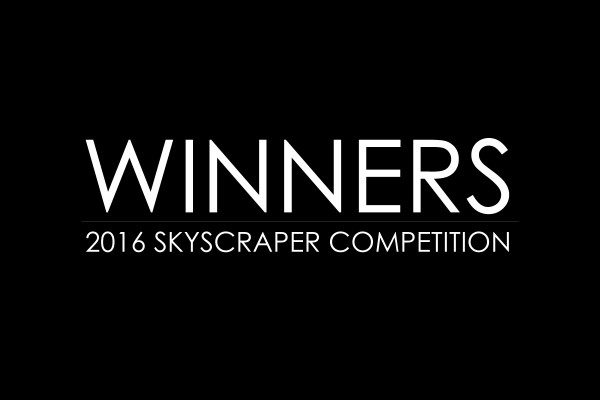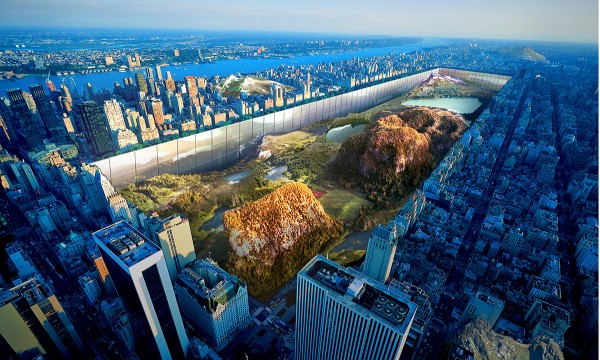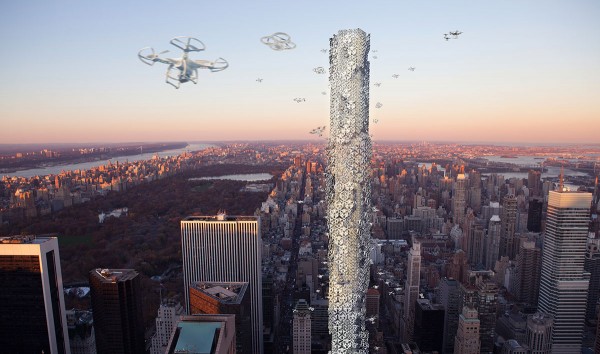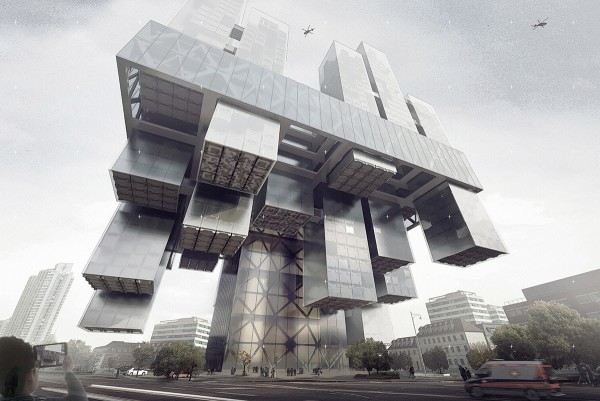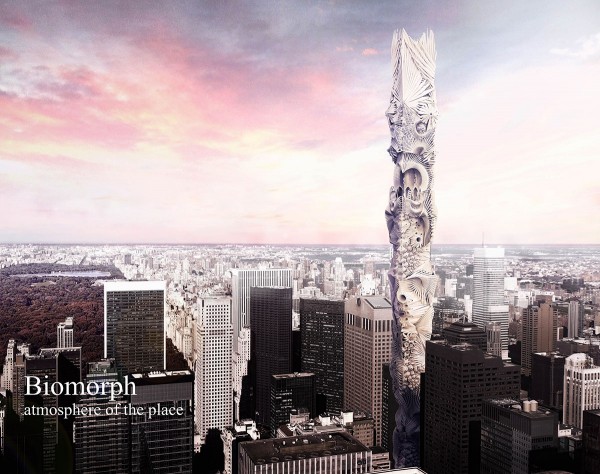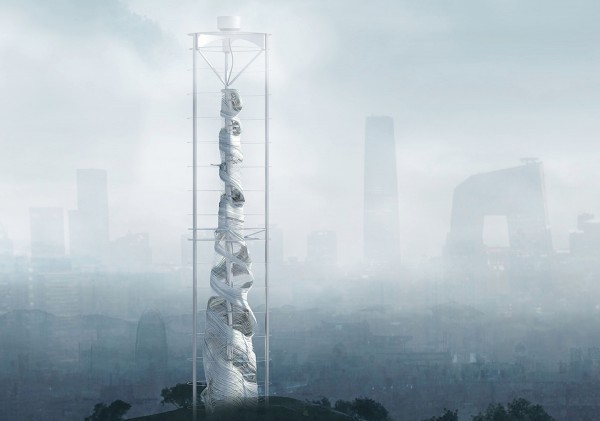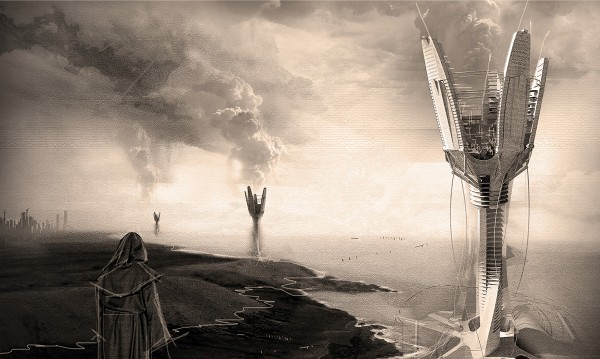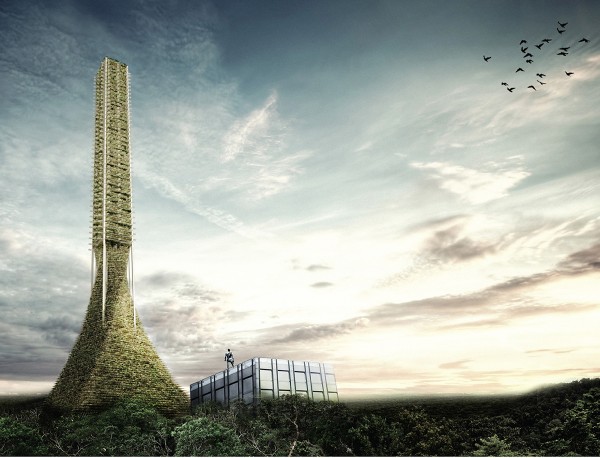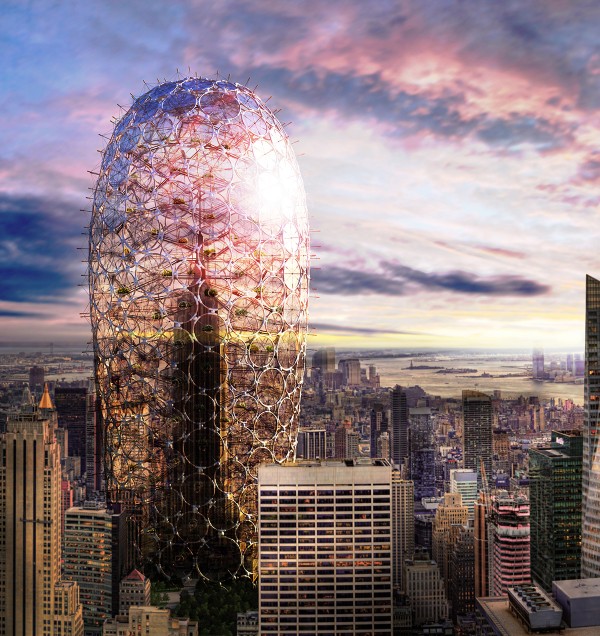eVolo Magazine is pleased to announce the winners of the 2016 Skyscraper Competition. The Jury selected 3 winners and 21 honorable mentions from 489 projects received. The annual award established in 2006 recognizes visionary ideas for building high- projects that through the novel novel use of technology, materials, programs, aesthetics, and spatial organizations, challenge the way we understand vertical architecture and its relationship with the natural and built environments.
The FIRST PLACE was awarded to Yitan Sun and Jianshi Wu from the United States for the project New York Horizon. The design proposes a continuous horizontal skyscraper around the full perimeter of a sunken Central Park. The project would create 7 square miles (80 times greater than the Empire State Building) of housing with unobstructed views and connection to the park.
The Hive, designed by Hadeel Ayed Mohammad, Yifeng Zhao, and Chengda Zhu from the United States received the SECOND PLACE. The project imagines a vertical control terminal for advanced flying drones that will provide personal and commercial services to residents of New York City.
The recipients of the THIRD PLACE are Valeria Mercuri and Marco Merletti from Italy for the project Data Tower. The proposal envisions a sustainable skyscraper in Iceland designed for Internet servers.
Among the 21 honorable mentions there are skyscrapers that purify air, buildings conceived to create rain for the driest regions on Earth, vertical cities, sensory towers that explore our psychological relationship with space, and skyscrapers that prevent cities to sink.
The members of the Jury are: Matias del Campo [principal SPAN], Thom Faulders [principal Faulders Studio], and Marcelo Spina [principal PATTERNS].
The 2016 Skyscraper Competition was made possible with the sponsorship of our media partners and v2com.
eVolo Magazine is also pleased to announce the publication of EVOLO SKYSCRAPERS 3, the third book in the Skyscraper Series. This publication includes the best 150 projects received in the 2014, 2015, and 2016 competitions. This is a limited edition book and only 500 copies will be available worldwide.

